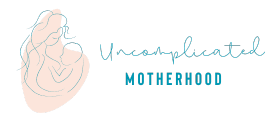Understanding and Managing Postpartum Depression
Navigating motherhood brings a deluge of emotions, from the highs of unparalleled joy to the lows that many often don’t speak of. Postpartum Depression (PPD) is a shadow that lurks behind the birth of many babies, affecting mothers in ways that can be hard to articulate. It’s a journey filled with silent tears and unspoken fears.
The joy of welcoming a new life is expected to be overwhelming, overshadowing any negative emotions. However, for some mothers, this isn’t the case. Instead, they grapple with feelings of despair and anxiety, often in solitude, feeling a burden of guilt for not connecting with their newborn as they believe they should.
Understanding Postpartum Depression is the first step towards battling it. This article seeks to shed light on this condition, giving voice to countless mothers and providing guidance on navigating these tumultuous waters.
Recognizing the Signs of PPD
Postpartum Depression is more than just the ‘baby blues’. It’s a deep-seated mood disorder, with symptoms that are more intense and prolonged.
Some women experience overwhelming sadness, an inability to connect with their baby, or a constant feeling of inadequacy or guilt. These feelings can sometimes manifest soon after birth or may take weeks to surface.
Physical symptoms, such as changes in appetite, insomnia, or excessive fatigue, can also be indicative of PPD. These are often dismissed as normal post-birth recovery symptoms, making early detection a challenge.
Behavioral changes are also key indicators. From withdrawal from loved ones to a lack of interest in previously enjoyed activities, these shifts can hint at the emotional storm brewing within.
The Underlying Causes
Understanding the root causes of Postpartum Depression can aid in addressing it holistically.
Hormonal fluctuations post-delivery play a significant role. A drastic drop in hormones like estrogen and progesterone can affect mood. Thyroid hormones can also dip, leading to symptoms mimicking depression.
Physical aftermaths of childbirth, like sleep deprivation and the recovery process, can take a toll on mental well-being. This, coupled with the new responsibility of caring for a baby, can be daunting.
Personal history and environmental factors can amplify PPD risks. A history of depression, a lack of support, or external stresses can act as triggers, making some mothers more susceptible.
Navigating Treatment and Recovery
Acceptance and proactive steps can significantly aid recovery.
Therapy, especially cognitive-behavioral therapy, has shown effectiveness in treating PPD. It provides tools to alter negative thought patterns, equipping mothers with coping strategies.
In some cases, antidepressants might be prescribed. It’s essential to discuss potential side effects and impacts on breastfeeding with a healthcare provider.
Support groups can be transformative. Sharing experiences and feelings with fellow mothers can provide solace, ensuring one doesn’t feel isolated in their struggles.
The Role of Loved Ones
The journey of Postpartum Depression isn’t limited to the mother alone. Loved ones play a pivotal role in recognizing signs and providing support.
Simple acts, like offering to babysit, ensuring the mother gets rest, or just listening, can provide immense relief.
Educating oneself about PPD can be beneficial. Recognizing the difference between normal recovery challenges and symptoms of PPD can expedite intervention.
Encouraging and supporting a mother in seeking professional help can make a world of difference. Remember, there’s no shame in seeking help; it’s a testament to the strength of the mother’s love for her child.
Prevention and Preemptive Measures
While it’s not always possible to prevent [Postpartum Depression], being informed and taking proactive steps can reduce the risk and ensure early intervention if it does manifest.
Education is paramount. Understanding the potential onset of PPD can help in recognizing the initial signs. Mothers-to-be can benefit from workshops or reading materials during pregnancy to equip them with this knowledge.
Maintaining open communication channels with healthcare providers throughout pregnancy and post-delivery is crucial. Regular check-ins can help monitor mood and emotional well-being, allowing for timely interventions.
Self-care, often pushed to the backburner during this period, needs prioritization. Setting aside moments for relaxation, ensuring a balanced diet, and engaging in light physical activities can act as buffers against the onset of depression symptoms. Remember, a healthy mother leads to a healthy baby.
Conclusion
Postpartum Depression is a silent battle many mothers fight behind closed doors. But it’s essential to remember that it’s a chapter, not the entire story. With understanding, support, and the right interventions, this cloud too shall pass. Motherhood is an intricate tapestry of joys, challenges, learnings, and unyielding love. Every tear, every hurdle overcome, adds depth to this beautiful journey. To every mother grappling with PPD, remember: You are strong, you are loved, and you are never alone.
